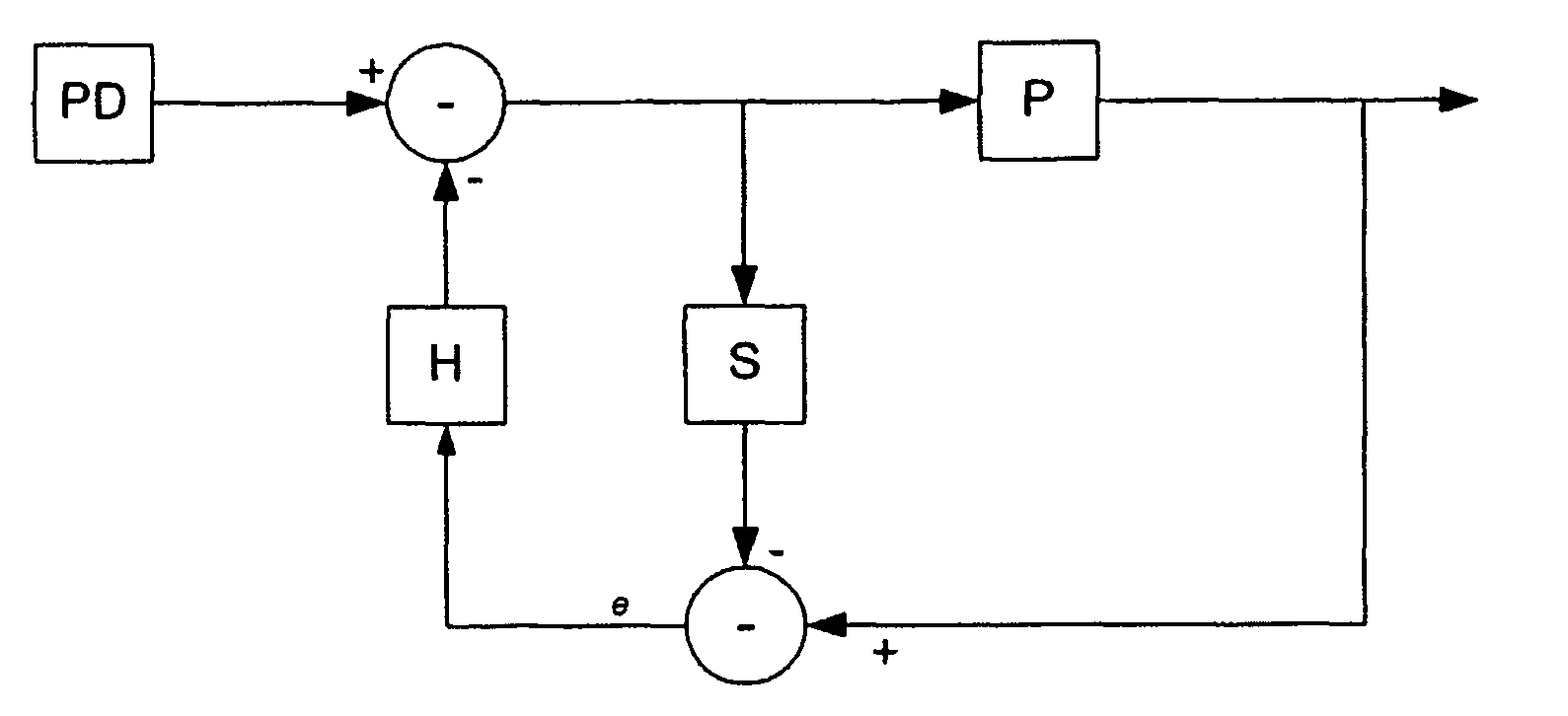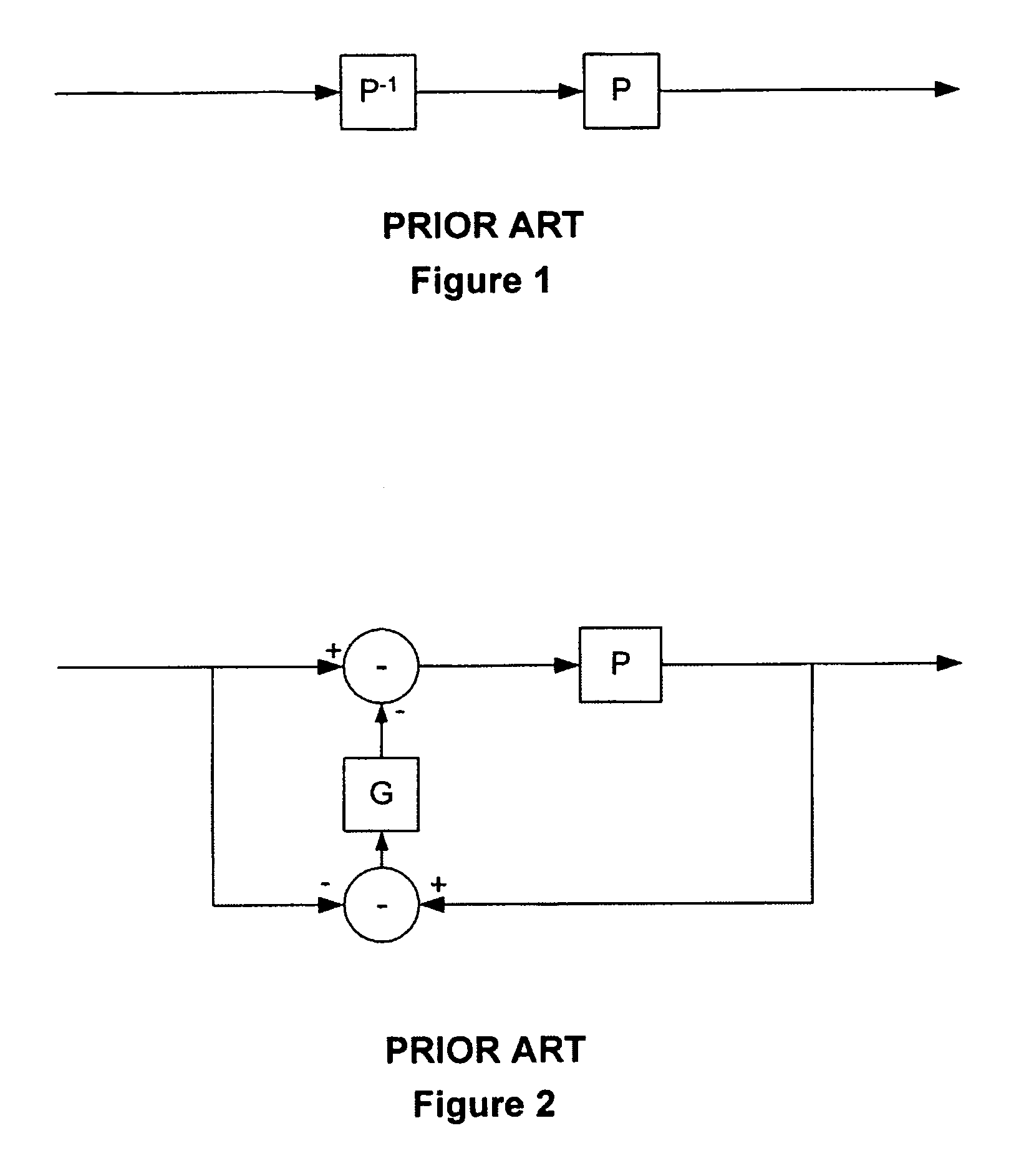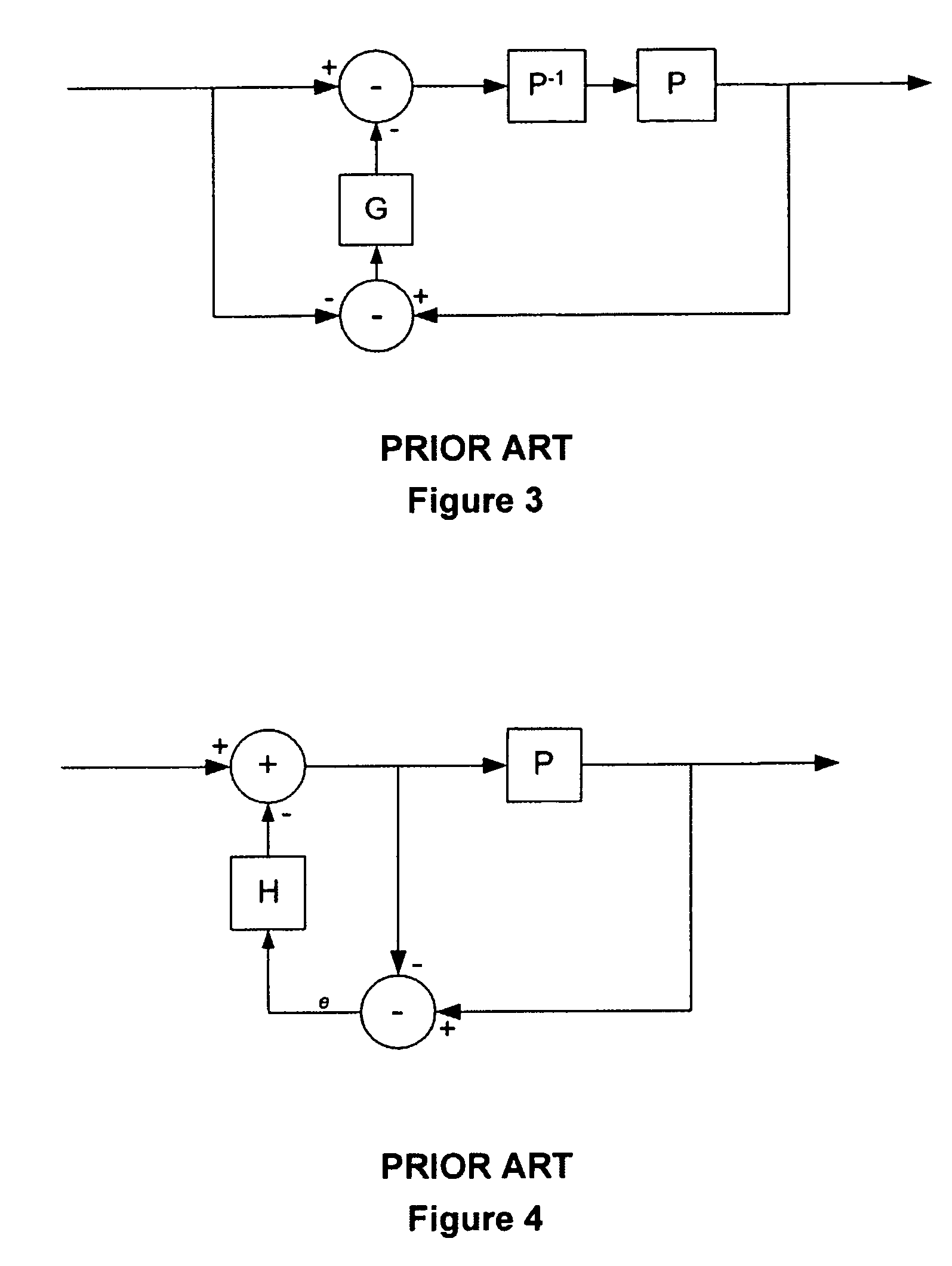Enhanced feedback for plant control
a plant control and enhanced technology, applied in the field of enhanced feedback for plant control, can solve the problems of increasing the delay of successively more accurate higher-order approximations generated by the gerzon procedure, the inability to deal with deviations from the expected plant behaviour, and the inability to deal with deviations
- Summary
- Abstract
- Description
- Claims
- Application Information
AI Technical Summary
Benefits of technology
Problems solved by technology
Method used
Image
Examples
Embodiment Construction
[0091]The present invention provides for a feedback correction signal to be obtained by taking the difference between the output of the plant and the output of a simulator that models the plant. In the simplest embodiment of the invention, a simulator S models known aspects of the plant P, and the feedback modifies the input to the plant in response to the difference between the output of the plant and the output of the simulator. This is shown in FIG. 5, which is to be compared with FIG. 4.
[0092]In FIG. 5, the subtraction node at the bottom of the figure extracts the said difference as an error signal e. In this way, to the extent that S models P accurately, e will be zero. Even if e receives a perturbation because of noise or because of mismatch between S and P, and this perturbation is fed through H thereby providing a perturbation to the input u of the plant P, the perturbation to the output of P will be substantially balanced by a similar perturbation to the output of S. Theref...
PUM
 Login to View More
Login to View More Abstract
Description
Claims
Application Information
 Login to View More
Login to View More - R&D
- Intellectual Property
- Life Sciences
- Materials
- Tech Scout
- Unparalleled Data Quality
- Higher Quality Content
- 60% Fewer Hallucinations
Browse by: Latest US Patents, China's latest patents, Technical Efficacy Thesaurus, Application Domain, Technology Topic, Popular Technical Reports.
© 2025 PatSnap. All rights reserved.Legal|Privacy policy|Modern Slavery Act Transparency Statement|Sitemap|About US| Contact US: help@patsnap.com



